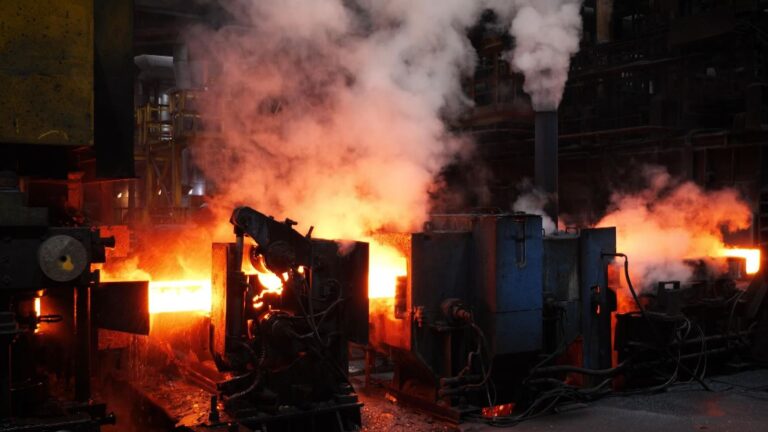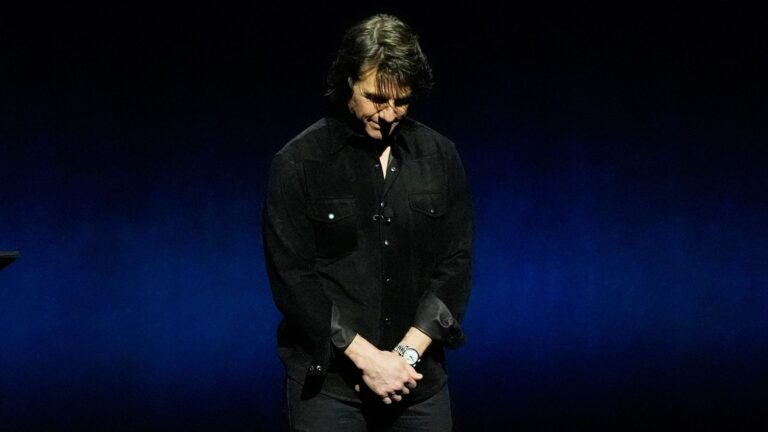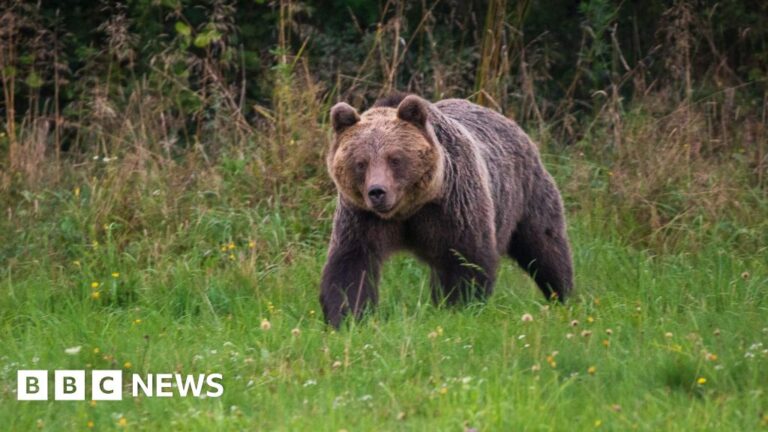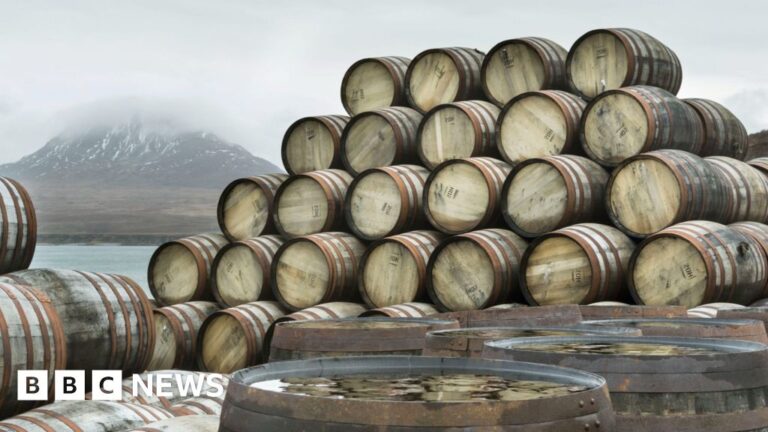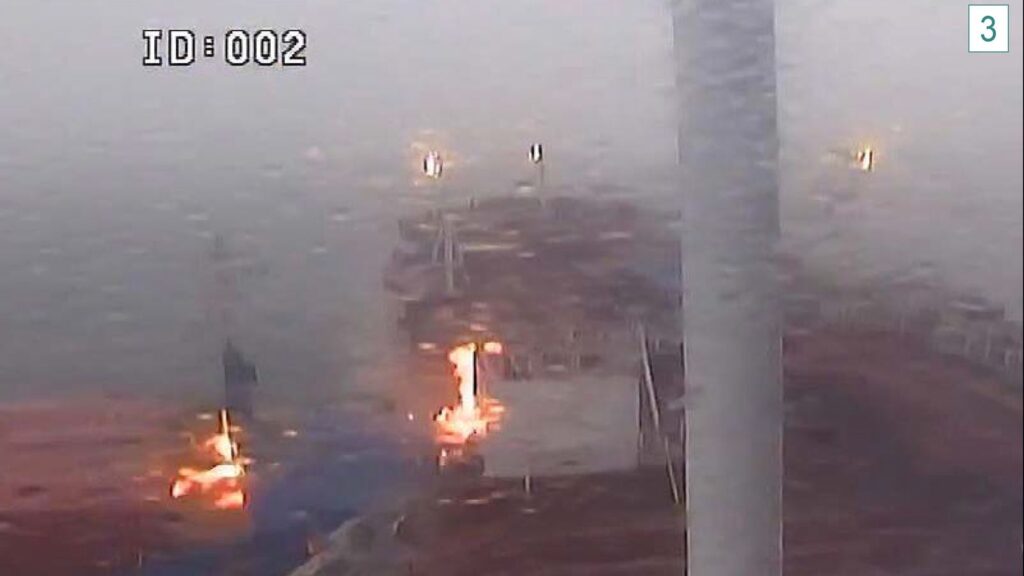

Newly released photographs show the moment two ships collided in last month’s North Sea crash.
It comes as a preliminary investigation has found that neither ship had a “dedicated lookout”.
Visibility when the Solong container ship struck the Stena Immaculate oil tanker off the coast of East Yorkshire on 10 March was “patchy”, the Marine Accident Investigation Branch (MAIB) said in a preliminary report.
 Image: Visibility was ‘patchy’ at the time of the crash. Pic: Crowley Government Services
Image: Visibility was ‘patchy’ at the time of the crash. Pic: Crowley Government Services
The Stena Immaculate was anchored five miles north of the Humber light float – a navigational aid. Solong collided with the oil tanker at a speed of about 16 knots (around 18.4mph) at 9.47am.
“The visibility in the area north of the Humber light float was reported to be patchy and varying between 0.25 nautical miles (nm) and 2.0nm,” the report said.
“Neither Solong nor Stena Immaculate had a dedicated lookout on the bridge.”
Please use Chrome browser for a more accessible video player
 0:21 Tanker and cargo ship in flames after crash
0:21 Tanker and cargo ship in flames after crash
It added: “At (7am), Solong’s master returned to the bridge and took over the watch as the lone watchkeeper.”
US tanker Stena Immaculate was approaching the Humber Estuary on 9 March when it was directed to anchor in an area with eight other vessels.
Portuguese registered Solong was sailing from Grangemouth, Scotland to Rotterdam, the Netherlands.
The report said Solong “altered course” at around 1.30am to a heading of 150 degrees, which is a south-east direction.
It maintained this course until the crash except for a “slight deviation” at 3.45am.
The aviation fuel that the Stena Immaculate was carrying poured into the sea and onto the bow of the Solong, with the heat generated by the force of the crash causing the intense fire seen on board the ships.
 Image: Neither ship had a dedicated lookout, an initial report has found. Pic: Crowley Government Services
Image: Neither ship had a dedicated lookout, an initial report has found. Pic: Crowley Government Services
What is the hierarchy on a ship?
On ships of these size, there a numerous different roles on board.
At the top of the tree is the “master” or “captain”, then the first officer is the second in command and they assist with navigation.
Under them is the second officer, who supports the first officer.
The report refers to “watchkeepers” and “lookouts”, and to some extent all of these roles above perform the action of “keeping watch”.
As they sail, these crew members are constantly scanning the sea watching for obstacles.
But their role is different to a “dedicated lookout”. Investigators say that neither ship had a “dedicated lookout” on the bridge – which is the ships’ command centre.
Their sole purpose is to keep a lookout, and absolutely nothing else.
It’s the captains’ job to ensure that the watchkeeping arrangements on the ship are adequate for safe navigation.
This means ships need to take into account visibility and meteorological conditions to make a call as to whether they should have a dedicated lookout.
As such, investigators say they are looking at whether both ships should have had someone in this role, based on the visibility and weather at the time.
This report doesn’t draw any conclusions on this though, and we will have to wait for that assessment.
Rescuers saved 36 crew members from both ships. One sailor – named as Filipino national Mark Angelo Pernia, 38 – remains missing from Solong and is presumed dead. Mr Pernia was reported to be in the forecastle area – the forward deck of the ship – at the time of the collision, the report says.
The crews of both vessels took “immediate action”, with the report adding: “Attempts by Stena Immaculate’s crew to fight the fire, and for Solong’s crew to locate the missing able seaman, were hampered by the severity of the fire.
“Both Stena Immaculate and Solong’s crew abandoned to lifeboats and were subsequently recovered by the efforts of local boats and emergency responders, coordinated by His Majesty’s Coastguard.”
Please use Chrome browser for a more accessible video player
 1:07 Tanker and cargo ship in flames after crash
1:07 Tanker and cargo ship in flames after crash
The Solong’s Russian captain, Vladimir Motin, 59, appeared at the Old Bailey last month charged with gross negligence manslaughter and is due to stand trial in January 2026.
The salvage operations for both ships remain ongoing, with the report noting that “an evaluation of the nature and extent of pollution from both vessels is in progress”.
The Marine Accident Investigation Branch’s full investigation will examine manning and fatigue management, the condition and maintenance of the vessels involved and the environmental conditions at the time.
It will also look at the navigation and watchkeeping practices on board both vessels, and the use of the offshore area as an anchorage for vessels waiting to enter the Humber Estuary.
